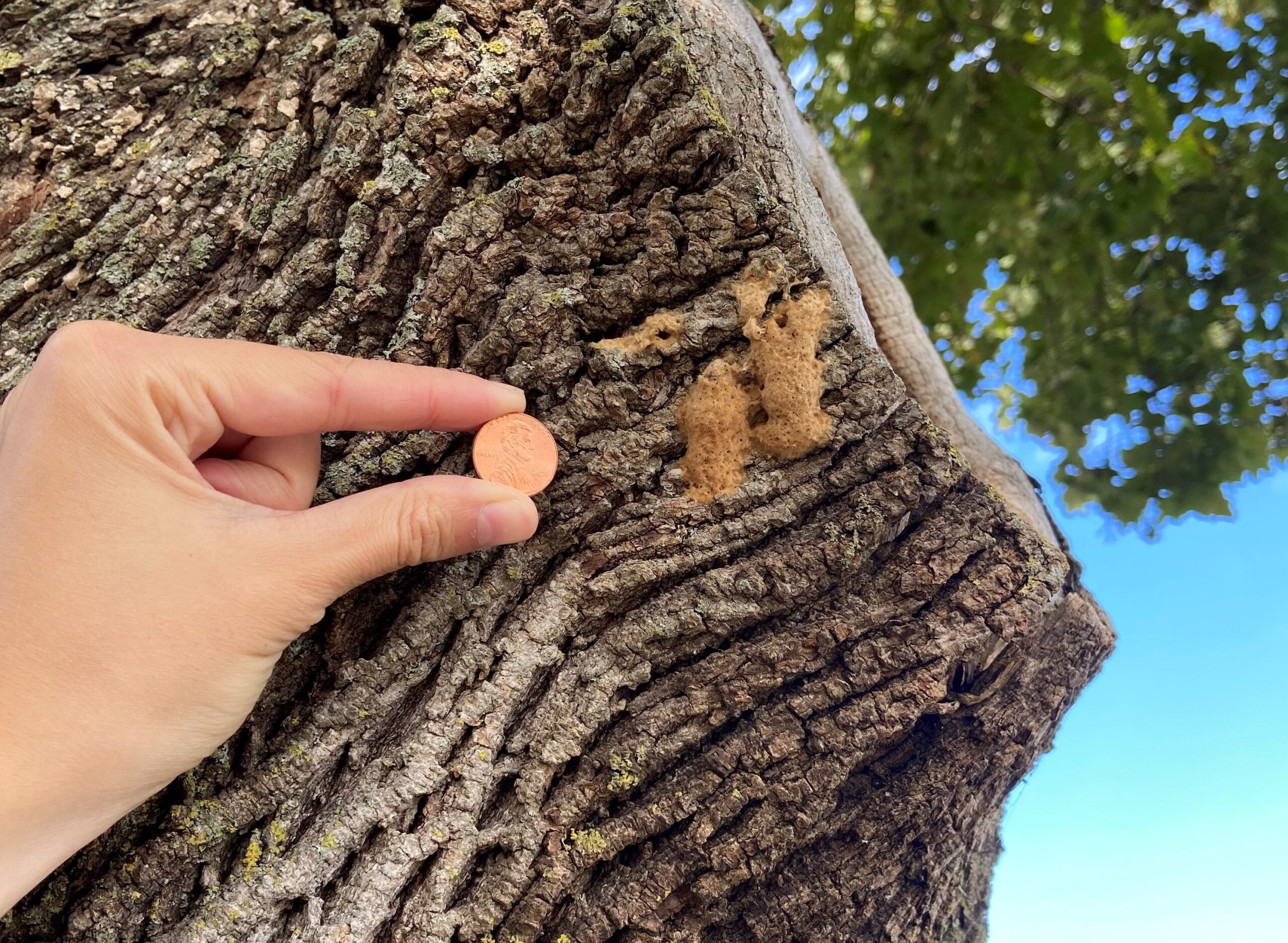By Bill McNee, DNR Forest Health Specialist, Oshkosh
bill.mcnee@wisconsin.gov or 920-360-0942
As long as weather conditions are favorable for the spongy moth* (formerly known as gypsy moth) population, the current outbreak is predicted to continue and spread to other parts of Wisconsin in 2023. Property owners are encouraged to examine susceptible host trees (including oak, birch, crabapple, aspen and willow) and plan ahead.

Spongy moth egg masses are tan-colored lumps that are larger than a penny, about the size of a nickel or quarter. Photo: Wisconsin DNR
During summer 2022, we received many calls from property owners urgently looking for a tree care business to control a very large caterpillar infestation. Arranging for an insecticide treatment ahead of time can secure a treatment, as well as avoid a last-minute rush when pesticide application businesses may already be very busy. Resources for finding a qualified pesticide applicator include the Wisconsin Arborist Association, International Society of Arboriculture and a local phone book.
Insecticide treatments are usually most effective when done while the caterpillars are small (mid-to-late May in southern counties and late May-early June in northern counties). Treatments done from the ground include cover sprays, soil injections and trunk injections that mitigate the risk of introducing oak wilt.
One option for treating larger areas of high-value trees is to organize an aerial spray. People hoping to do an aerial spray in the spring of 2023 should begin planning immediately, especially when multiple property owners are involved, to ensure a timely treatment.
An egg mass survey is the best way to predict the level of defoliation next summer. Spongy moth egg masses are tan-colored lumps about the size of a nickel or quarter, and are found on trees, buildings and other outdoor objects. They may also be found in places such as firewood piles and inside birdhouses. Egg masses produced in 2022 will feel firm and appear darker in color than older egg masses, which appear faded, feel spongy and do not contain viable eggs.
A professional treatment is often unnecessary when there are low numbers of egg masses or small trees. A professional treatment is likely needed when there are high numbers of egg masses on large trees. Host trees enduring heavy defoliation and/or drought stress in 2022 are at elevated risk for mortality if defoliated in 2023, and will often need insecticide protection. Untreated, low-vigor oak trees may experience twolined chestnut borer (a native beetle) infestation as well. Consult an arborist or forester.
Visit spongymoth.wi.gov for additional information on egg mass oiling and removal, physical controls and insecticide application. A map of quarantined counties shows where the pest is considered to be “generally established.”
*A new common name for Lymantria dispar, spongy moth, replaced the prior name of this insect, gypsy moth, in 2022. This change was necessary because the word ‘gypsy’ is an ethnic slur and the former common name equated people with insects. For more information, visit the Entomological Society of America website.
